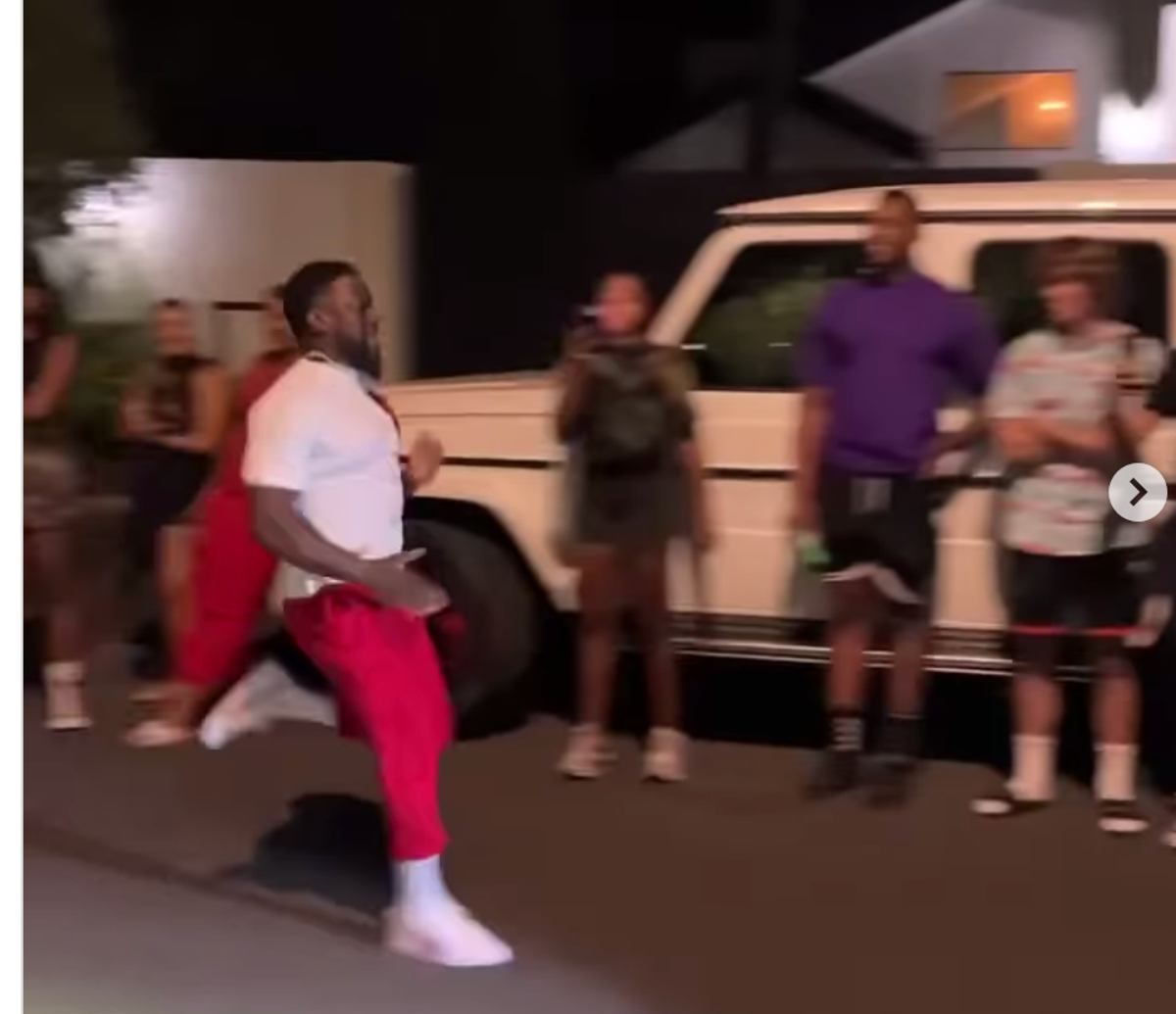
Comedian Kevin Hart, 44, recently suffered an injury after deciding to race former New England Patriots running back Stevan Ridley, 34, in a 40-yard dash. He tore muscles in his hips and lower abdomen, and is temporarily using a wheelchair.
Now, a video of the race which led to Hart’s injury has been released. Ridley posted the clip to his Instagram account, writing in the caption “Gotcha?? Got whooo?!” and tagging Hart.
Hart explained how the race came to be—and why he regrets it—in a video posted to his Instagram account last week. “Stevan Ridley, I’m going to go ahead and put this story out there before you do. Me and Stevan got into a little debate. This debate was based off of who was faster. Those who know me know I’m pretty fast,” Hart said. “Stevan said, ‘Kev, ain’t no way you’re going to beat me.’ I said, ‘Bet.’ He said, ‘Bet.’ We got out there, and we go run the 40-yard dash. Guys, I blew all my s***.”
Hart explained his injuries, joking that he didn’t know what his abductors were but that he tore them during the race. “I can’t walk,” he said. “This is 44…What are we competing for at this age? What am I doing? Why did I even race? Now I can’t walk.” In a subsequent video, Hart said he’ll be in recovery for six to eight weeks, and warned his friends who teased him for trying to race a former NFL running back.
“You know how long it takes me to get out of the car? I’m a mess. This s*** got me. It’s bad. Everything’s swollen. Can’t move my legs,” he said. “To every friend that has called me and that has laughed at me, after this six to eight weeks, when I get back to functioning, I’m going to light your asses up. We’ll be back. This road to recovery is going to be real.”
Dr David A Wang, a sports medicine physician at the Hospital for Special Surgery, told The Independent that there are certain risk factors for injuries like the ones Hart sustained, including people “with a previous injury to the muscle, those with weaker or less flexible muscles, older age, and fatigued muscles”.
Abdominal tears like the one Hart experienced often occur when the abdominal muscles, which are located on the front of the body in between the ribs and pelvis, are overused, according to the Cleveland Clinic. Abdominal tears can occur during intense workouts (especially those that involve sudden twisting), accidents, or while lifting heavy objects. While anyone can tear or strain their abdominal muscles, people who play football or tennis—both of which require side-to-side trunk movements—are more likely to suffer this type of injury.
Symptoms of abdominal tears include bruising, muscle spasms, stiff muscles, swelling, and pain. The pain may intensify when coughing, sneezing, laughing, sprinting or doing other vigorous exercises, or standing up after sitting for a long time. Abdominal tears can be diagnosed after a physical exam, but doctors may recommend an x-ray to confirm the diagnosis and scan for any other injuries, such as broken bones or spinal fractures.
The other injury Hart experienced, known as a hip abductor tear, occurs during similar situations, according to MedStar Health. The hip abductor muscles—located on the sides of one’s hips—can tear when a person quickly changes direction, or when they’re sprinting. The muscles can also tear when one’s leg is met with resistance during a rapid movement—for instance, when someone forcefully kicks a ball.
Hip abductor tears can cause chronic pain and weakness, and, in severe cases, may require arthroscopic hip surgery. These injuries can also be diagnosed after a physical exam, though an MRI or ultrasound might also be recommended, according to South Bend Orthopedics.
Dr Wang said that stretching before strenuous workouts may help prevent abdominal and abductor tears - but the risk remains.
“Stretching prior to working out is thought to improve flexibility in muscles, which we would like to think decreases injuries, but the evidence to support stretching’s ability to prevent injuries is mixed,” he said. “The best time to perform stretching may actually be after a work out during the cool down period when the muscles are more pliable and loose from having just been exercised. More dynamic activities such as a brisk walk, jumping jacks, high knees or lunges prior to strenuous workouts will increase blood flow to the muscles that are about to be used, and may better prepare them for exercise. Ultimately, no matter what the warm up routine or exercise, it is important to remember to do some form of warm up prior to strenuous activity to prepare your muscles for the increased load they are about to face.”
Rest is essential after either of the injuries Hart sustained, which may be why he’s temporarily using a wheelchair.
Hart joked that his recent injuries taught him a valuable lesson about why it’s important to participate in age-appropriate workouts.
“Ladies and gentlemen, the age of 40 is real,” he said. “To all my men and women out there that are 40 years old and above, it’s not a game. Respect that age…or that age will make you respect it. I was just forced to respect it.”







